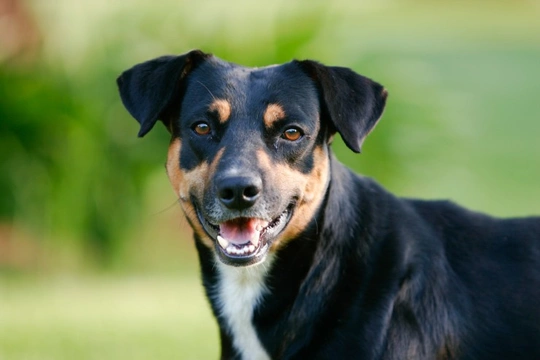
Illnesses and issues that can cause your dog to lose a tooth
Like humans, dogs get two sets of teeth in their lives – their baby teeth when they are young, and then their adult set when they get a little older. If an adult tooth is lost or damaged and has to be removed, it won’t be replaced – and it is important for dog owners to try to keep their dog’s teeth clean and healthy, and to monitor for any signs of problems or changes.
Spotting a missing tooth or a tooth that is damaged or loose in your dog’s mouth is something that you shouldn’t ignore, because it might be indicative of dental problems, a health condition, or an accident or injury. Additionally, a tooth that appears to be absent may still have part of its roots present under the gumline, which can go on to cause further problems if it is not removed or investigated.
If you have noticed that your dog has lost an adult tooth, you may be wondering why this is – and finding out can potentially help you to protect the rest of your dog’s teeth in the future. In this article we will look at some of the main causes for a dog losing one of their adult teeth to give you a head start. Read on to learn more.
Getting to know your dog’s normal dentition
Every dog will have a slightly different structure to their mouth and teeth, depending on the shape and size of their muzzle and all of the usual differences you can find from dog to dog, even across those from within the same breed.
This means that getting to know what your dog’s teeth and mouth looks like normally is important in order to be able to spot a potential missing tooth, particularly if your dog has unusual dentition.
Certain dog breeds like the Chinese Crested can have what is known as a “primitive mouth,” which comes with an unusual arrangement of teeth. Certain other breeds too like the English bulldog may have unusually placed or shaped teeth in their mouths, so try to get familiar with what is normal for your dog from as soon as you get them.
Gum disease and tooth decay
By far the most common causes of tooth loss in dogs are tooth decay and gum disease, and these conditions develop over an often-long period of time, causing problems like gingivitis, plaque and tartar, cavities, pain and discomfort.
This is the first thing your vet will want to check out if your dog has lost one or more teeth, and if this is the cause, it will usually become obvious early on. Your vet will almost certainly recommend a sedated dental procedure to check the condition of all of your dog’s teeth, remove any rotting or damaged teeth, and to give the remaining teeth a thorough clean to restore them to good condition as far as possible.
Hormone imbalances
Health conditions that lead to hormone imbalances can also lead to tooth loss, and the most common of these is hyperparathyroidism, which is an imbalance in the dog’s parathyroid gland. The parathyroid gland helps to control the calcium levels in the blood and so, the teeth – and calcium is an essential component of healthy teeth.
If your dog’s parathyroid gland isn’t working properly, there might not be enough calcium available in their bloodstream to support dental health, which over time, will lead to weakening of the teeth and potential tooth loss.
Chronic health conditions
There are also a wide range of other health conditions that can cause tooth loss – including issues like gastric reflux, which over time, can lead to tooth decay and lost teeth. Kidney disease, calicivirus and a range other health conditions can all potentially lead to tooth loss too.
Accidents and injuries
If your dog is injured or hits their head, this may cause damage to their teeth too. If a tooth is knocked loose or damaged, this may not be evident right away – but if your dog does lose a tooth, try to remember if they might have taken a knock to the face over the last year or so that might have loosened or weakened one or more teeth.
It is always wise to get your dog checked out by your vet if they take a knock, in order to make sure they are fine, which will include checking their teeth and may mean that a tooth that would otherwise be lost might be able to be saved.
Brachycephalic risk factors
Brachycephalic dogs like the English bulldog that we mentioned earlier on tend to be more vulnerable to dental damage if they get knocked or accidentally hit in the face. This is because their muzzles are shorter and flatter, presenting more of the teeth at the front of the face where they are more likely to be hit or knocked by an impact.
Brachycephalic dogs also tend to have more vulnerable eyes too, for the same reasons.
Poor nutrition
Finally, malnutrition – either not being fed enough food or being fed the wrong type of diet – can also affect your dog’s health in a huge number of ways, and can weaken their teeth and make them more vulnerable to damage and injury.
A dog may be malnourished because they’re not fed a complete diet appropriate for their life stage, or because they have an underlying health condition that means they don’t get the full benefits of the nutrients in their food.
Your vet can advise you on the best way of feeding your dog – and if necessary, run tests to check that there’s not a problem compromising your dog’s dental health and general health too.



